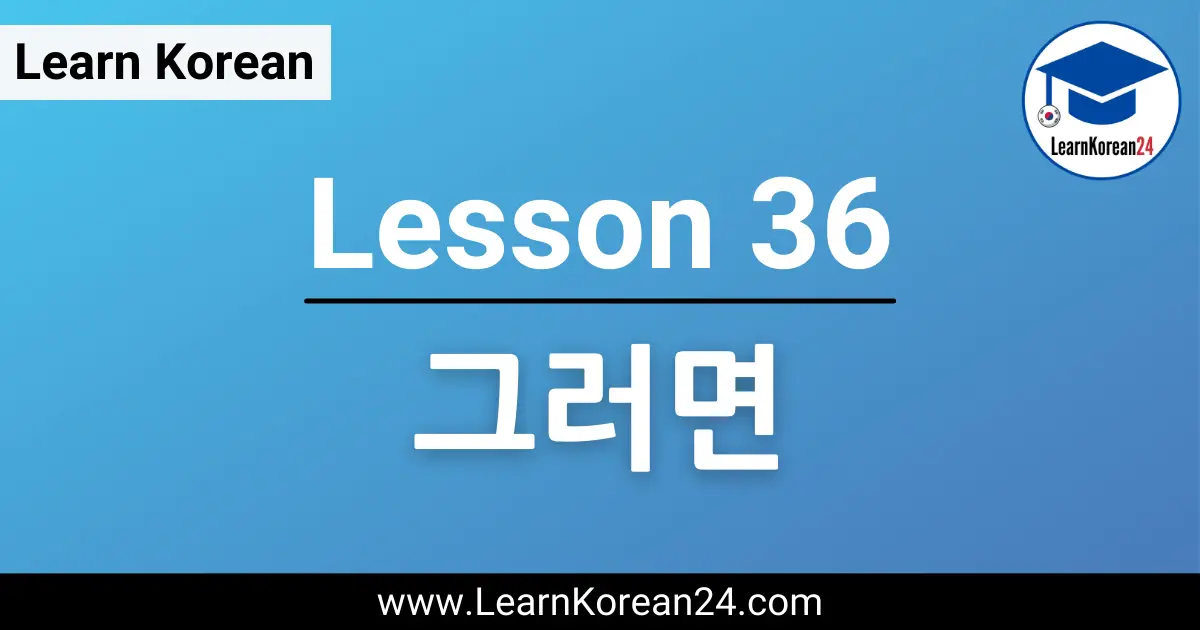Lesson 36: 그러면
In this lesson, you will learn how to use the adverb 그러면. 그러면 has 3 main usages which are to express a conditional statement, to express acceptance of a condition, and to finish off a conversation. This may sound confusing, but don’t worry. We will show you lots of examples to help you understand.
Lesson 36: 그러면
그러면, which is often shortened to 그럼, means ‘if so’, in that case’, or ‘then’ in Korean. 그러면 is used to connect two sentences and so it is always placed at the start of the 2nd sentence.
Usage 1:
그러면 is used to express a statement that is conditional on the preceding sentence. When using 그러면 in this way, the preceding sentence is usually an imperative sentence or a suggestion. Here are some examples:
택시를 탈까요? 그러면 안 늦을 거예요. = Shall we take a taxi? Then you won’t be late.
사전을 찾아보세요. 그럼 단어 뜻을 알 수 있어요. = Look it up in the dictionary. Then you can understand the meaning of the word.
Usage 2:
그러면 is also used to express your acceptance of the preceding sentence. When using 그러면 in this way, 그러면 is then followed by your own comment. Here are some examples:
회의 준비를 다 했어요? 그러면 회의를 시작할까요? = Did you finish preparing for the meeting? Shall we start the meeting, then?
A: 갑자기 배가 아파요. = My stomach suddenly hurts.
B: 그럼 이 약을 드세요. = Take this medicine, then.
Usage 3:
그러면 can also be used when finishing off a conversation. To help you understand what we mean, check the examples below.
A: 내일 오후 2시에 만날까요? = Shall we meet at 2 pm tomorrow?
B: 좋아요! 그럼 내일 봐요. = Okay. See you tomorrow, then.
A: 감사합니다. 안녕히 계세요. = Thank you. Goodbye.
B: 아니에요. 그럼 다음에 봐요. = You’re welcome. See you next time, then.
Example Sentences
실례지만 우체국이 어디에 있어요? = Excuse me, but where is the post office?
여기에서 왼쪽으로 가세요. 그러면 편의점 옆에 있을 거예요. = Go left from here. Then it will be next to the convenience store.
오늘 시간이 없어요. = I don’t have time today.
오늘도 바빠요? 그럼 언제 만날 수 있어요? = You are busy today, too? Then when can we meet?
배고파요. = I’m hungry.
그럼 떡볶이 어때요? = How about tteokbokki, then?
오늘 수업 끝났어요. 그럼 다음 시간에 봐요! = That’s the end of the lesson. See you next time, then.
STUDY ONLINE WITH KOREAN ARAH!
Ready to take your Korean to the next level?
Get One-on-One Korean lessons from a qualified and experienced Korean language tutor!

